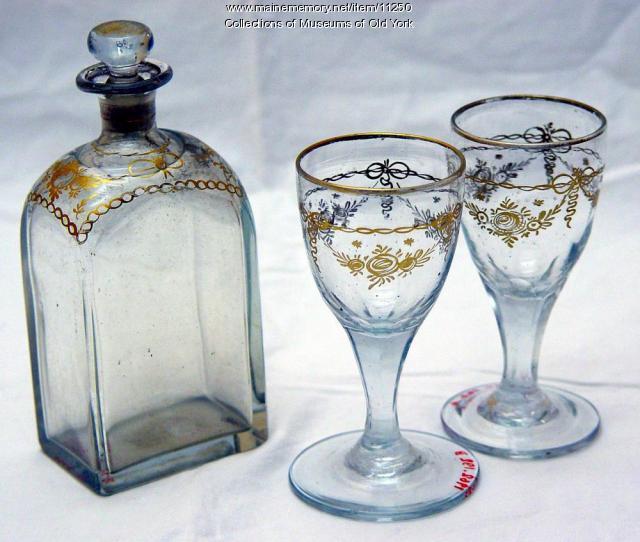Keywords: York, Maine
Item 135731
Stacey Tavern Sign, York, ca. 1791
Contributed by: Old York Historical Society Date: circa 1791 Location: York Media: wood
Item 18432
Contributed by: Maine Historical Society Date: 1778-04-13 Location: York Media: Ink on paper
Item 84618
York property, E. Side Winding Way, Peaks Island, Portland, 1924
Owner in 1924: Eben Francis York Use: Summer Dwelling
Item 87340
167 York Street, Portland, 1924
Owner in 1924: Estate of E E Dyer Use: Dwelling
Item 151722
York County Trust Co., York, 1921-1923
Contributed by: Maine Historical Society Date: 1921–1923 Location: York; Kittery Client: York County Trust Co. Architect: John Calvin Stevens and John Howard Stevens Architects
Item 151491
Contributed by: Maine Historical Society Date: 1925–1926 Location: Saco Client: York Institute Architect: John Calvin Stevens and John Howard Stevens Architects
Exhibit
John Hancock's Relation to Maine
The president of the Continental Congress and the Declaration's most notable signatory, John Hancock, has ties to Maine through politics, and commercial businesses, substantial property, vacations, and family.
Exhibit
These stories -- that stretch from 1999 back to 1759 -- take you from an amusement park to the halls of Congress. There are inventors, artists, showmen, a railway agent, a man whose civic endeavors helped shape Portland, a man devoted to the pursuit of peace and one known for his military exploits, Maine's first novelist, a woman who recorded everyday life in detail, and an Indian who survived a British attack.
Site Page
Early Maine Photography - Famous People - Page 3 of 3
"… in Fall River, Massachusetts; Brooklyn, New York; and Germantown, Pennsylvania. He is remembered as a prolific writer of hymns, the compiler of…"
Site Page
Portland Press Herald Glass Negative Collection - Crime & Disaster - Page 1 of 2
"He was imprisoned in Augusta, where New York police subsequently discovered that Kirby was the missing murderer of Lillian White of Brooklyn, NY."
Story
30 years of business in Maine
by Raj & Bina Sharma
30 years of business, raising a family, & showcasing our culture in Maine
Story
Don Bisson - Living his convictions
by Biddeford Cultural & Heritage Center Voices of Biddeford project
Returning after a career in New York City, Don has dedicated his life to addressing food insecurity.
Lesson Plan
Maine Statehood and the Missouri Compromise
Grade Level: 9-12
Content Area: Social Studies
Using primary sources, students will explore the arguments for and against Maine statehood and the Missouri Compromise, and the far-reaching implications of Maine statehood and the Missouri Compromise such as the preservation and spread of slavery in the United States. Students will gather evidence and arguments to debate the statement: The Missouri Compromise was deeply flawed and ultimately did more harm to the Union than good.
Lesson Plan
Longfellow Studies: "The Slave's Dream"
Grade Level: 6-8, 9-12
Content Area: English Language Arts, Social Studies
In December of 1842 Henry Wadsworth Longfellow's Poems on Slavery was published. "The Slave's Dream" is one of eight anti-slavery poems in the collection. A beautifully crafted and emotionally moving poem, it mesmerizes the reader with the last thoughts of an African King bound to slavery, as he lies dying in a field of rice. The 'landscape of his dreams' include the lordly Niger flowing, his green-eyed Queen, the Caffre huts and all of the sights and sounds of his homeland until at last 'Death illuminates his Land of Sleep.'






















